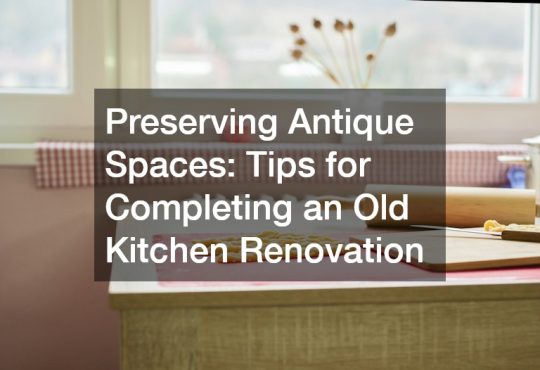
Handling the Costs of House to Home Renovations
If you plan to renovate a home, you know too well the excitement involved in the process. However, it’s imperative to manage your excitement for renovating in order to keep your budget under control. Too many times, homeowners start a project only to abandon it midway because of cost, while others get too intimidated by the cost and never begin to remodel. According to the Realtor, a small home renovation will set you back between $25,000 and $45,000, a medium one $46,000 to $75,000, while a major home upgrade costs $76,000 and upwards. Regardless of the magnitude of your upgrade, you could effectively handle the costs without draining all your savings by following some of the tips highlighted in this article.
1. Protecting Your Natural Resources
Natural resources are valuable but at times limited. Water is the most obvious resource to protect, as people use it for a variety of purposes. When renovating a house to a home, install low-flow plumbing fixtures to reduce water wastage. You can also contact water well treatment companies to ensure your well water is safe for consumption.
Energy is another natural resource you can conserve to save on costs. According to the Energy Information Administration, 51% of a household’s annual energy consumption goes to heating and air conditioning their homes. One of the ways to reduce energy costs is by installing energy-efficient windows and home insulation to allow your property to maintain its temperature more effectively. You can also install solar panels to capture natural sunlight and provide you with additional power for your home. By conserving natural resources, you can save on bills, reduce wastage and protect the environment.
2. Updating Your Bathroom

You can manage costs during bathroom remodels by focusing on cost-effective upgrades and preventing expensive repairs in the long run. When doing house to home renovations in the bathroom, consider affordable upgrades such as repainting walls and changing fixtures without draining your savings. A glass shower door install project can allow you to change the aesthetic of your bathroom without breaking the bank.
Consider your space, too, when designing your bathroom. A contractor can help you reconfigure your space to improve functionality. Redesigning your space will add more space to reduce clutter. For example, you could install shelving and cabinets. More floor space also gives your bathroom a minimalist look and gives you more options for interior design.
Leaks in your bathroom fixtures can shoot your water bill high, so you should consider repairing and replacing your plumbing fixtures during renovations. You can save water, prevent mold from forming and minimize your bill. If you want a more luxurious look, try upgrading to high-end materials such as marble and granite. You could also add underground floor heating which will add functionality.
3. Addressing Areas of Concern
If you want to manage costs during house to home renovations, addressing areas of concern is a smart move. Not only can this help you identify issues before they arise, but it can also help you prioritize repairs. A good place to start is a home inspection. According to the American Society of Home Inspectors, a home inspection takes between two and four hours, but it’ll include evaluating critical home systems such as HVAC, structural components, and foundational elements.
Depending on the home inspector’s report, you can choose which areas of concern to prioritize. If you discover foundation issues such as wall cracking, molds, and misaligned windows, it’s best to prioritize repair over other projects such as repainting. Addressing foundation issues ensures the structural integrity of your house and reduces costly repairs down the road.
Another critical area to address is drainage problems such as clogging and bad odor. Drain cleaning contractors can help you fix such issues. Fixing problematic issues gives you the confidence to begin other home projects that rejuvenate your home.
4. Checking for Problems
Another important aspect is any current problems that could skyrocket your renovation costs. While you can try to handle tasks yourself when checking and solving problems, working with a professional is the best way to ensure the work is done safely and effectively. They can inspect specific components in your house, highlight problems, and suggest the best solution. You can then request multiple quotes from various contractors for the best value-based service.
A good place to start is a pest inspection. Have you noticed some droppings, foul smells, or property damage? You may need a pest control company to deal with the problem before it costs you more in damages. Ensure you use eco-friendly products to reduce your impact on the environment. If they don’t, it may be necessary to leave your home for a short period of time.
Another area likely to have problems is plumbing fixtures. According to the Environmental Protection Agency, an average family can waste 180 gallons of water from leaking. Plumbing services professionals may help you detect problems before they cost you more. Further, since you can detect the problems early, you can make informed choices during house to home renovations.
5. Preparing for Disasters

Disasters can strike anytime, thus digging into your savings and leaving your family unsafe. By preparing for disasters, you can save costs and keep your household ready. Disaster-proof your house by using durable materials during house to home renovations. Durable materials such as metal roofing, impact-resistant windows, and hurricane shutters will keep your family protected and the noise out.
Developing a disaster preparedness plan is another way to prepare for disasters and manage costs. You can prepare an emergency kit with clothes, high-energy snacks, and a heat source. Install backup generators and surge protectors to protect your electronics from electricity fluctuations.
When preparing for disasters, always work with professionals. Your family and investments are too important to risk with DIYs. Work with contractors with experience in disaster-proofing homes. In addition, ensure to get home insurance, especially if you live in disaster-prone regions. Remember that conventional home insurance policies often don’t cover natural disasters, so you need to get a separate policy that specifically covers natural disasters.
6. Changing Out Appliances
Changing out old appliances is a smart way to reduce bills and improve safety. Did you know that heating and cooling appliances are responsible for 12% of all residential home fires, according to the Consumer Products Safety Commission? While many other factors could be culprits, age may be why an appliance fails. The wires may become loose or exposed. While replacing your well-beloved wood stoves may feel like a stretch, you’d be keeping your family safe and reducing utility bills.
When researching energy-efficient appliances, look for those with an Energy Star label because this label certifies that such products meet energy-efficiency standards. To determine if an appliance is of good value, look beyond the price tag—check its lifetime to evaluate value. Consider your budget and household needs before choosing which appliances to replace.
Your new appliances are valuable possessions that could minimize your electricity bills, but poor installation can reverse all these advantages. Therefore, consider hiring a qualified technician. Also, consider recycling or donating old appliances. By recycling, you can save costs, while donating helps reduce environmental impact.
7. Protecting Your Home

You can avoid additional costs that may come with damages and accidents during house to home renovations by protecting your home. You can also make home protection part of your remodeling. The first step you should take is to protect your valuables. Cover your furniture to avoid scratches, or take all your valuables to an off-site location for better protection. You may need key making services if you feel your home is not safe enough for your family.
Protect your home from environmental hazards too. Before renovations, test for asbestos, mold, or lead paint. Install smoke, CO2, and fire detectors during renovations to protect your home from a fire. In addition, ensure proper air circulation to prevent indoor air pollution. Remember it’s essential to work with professionals to ensure all workers are protected and your home’s integrity remains after the renovation process.
If your household has children or pets that are present during renovations, remember to prepare them beforehand. For example, have them move to a section of your house where there are no renovations being done. It’s best to keep children and pets away from renovation sites to avoid accidents. If you’ll be at the site, use protective clothing and avoid touching hazardous substances.
8. After a Leak Forms
Regarding house to home renovations, leaks can throw you off your budget and derail you from your timeline. After a leak forms, you can proactively ensure this doesn’t happen again. If you notice leaks forming, contact a roof repair professional to inspect the area. The professional will assess the extent of the damage or mold growth. Prioritize repairs based on the severity of the damage.
When determining what action to take, evaluate the skills required. You may discover a leak is coming from your pipes. If this is the case, it’s vital to call a plumbing service with experience detecting and addressing leaks. Be sure to ask family and friends for their referrals so you can choose a service that fits within your budget.
A low price doesn’t mean you should sacrifice quality. If a leak forms on your roof, choose durable materials that’ll offer value over a long period. Look for other features such as energy efficiency that could help you save on other costs.
9. Exterior Updates

Exterior updates can help you handle the costs of house to home renovations by reducing maintenance costs, improving energy efficiency, and increasing home value. Start with your outdoor and landscaping areas. Consider how each project could minimize your costs in the long overhaul. Some projects you could consider include creating outdoor living spaces that can help improve your functional living footage or fencing repair that will give your home the necessary privacy.
If you plant trees, you can reduce your cooling costs and make your property beautiful and environmentally friendly. Another upgrade you can consider is garage renovation. Installing energy-efficient garage doors can make your garage appealing and reduce your bills by preventing heat loss. Further, adding storage spaces can make your garage more organized.
Many consider wall painting to make their properties beautiful, but did you know that painting protects your building from the weather and pest damage? Yet another exterior upgrade to consider is siding replacement. Sidings play a critical role in insulating your home from weather elements. Be sure to consult with a professional contractor to learn more about how to protect your home.
10. Managing the Clean Up
Your project is done! You’ve saved some costs and given your home a new look. However, you no find yourself with a bunch of waste on your property. It’s important to manage this waste quickly to prevent any problems and to protect anyone who comes onto your property.
Consider a junk hauling service to dispose of the waste. Dumpster rental services are an option if you believe you can manage the clean-up process yourself. If you have some leftover valuable but hazardous substances, label them well to prevent accidents. Remember to clean and maintain regularly to keep your home looking fresh.
You don’t want to live in a home with heaps of junk. You can hire a cleaning service to help with removing the dirt. The whole idea is to leave your home looking spotless after renovations.
Are you ready to say goodbye to unnecessary home renovation expenses? The above tips will help you know where to save costs to complete your renovation project without financial worries. Remember, there’s more to successful house to home renovations. You shouldn’t have to break the bank to do your dream house remodeling. Now that you know how to handle the costs of your house to home renovations like a pro, what exciting remodeling ideas do you have in mind for your home?



